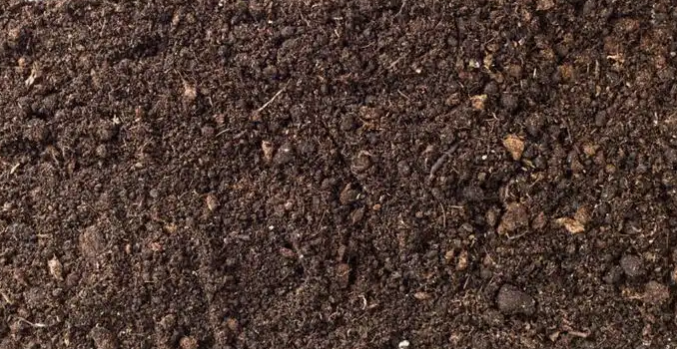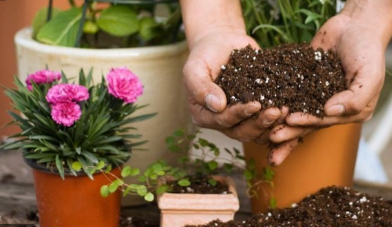Major Differences between Garden Soil and Potting Soil
What is a Garden Soil?
The soil that is generally used to grow outdoor plants is called garden soil. When you hear about gardening, the first thing that comes to your mind is the garden soil. Topsoil is another name given to this soil as it is found in the fields or lands. Compost and manure are the major ingredients found in garden soil.
Due to its organic nature, it easily tends to mix with other ingredients of the soil as well. It is commercially accessible from the garden stores. These soils when mixed with other products assist the gardeners to grow their desired products. Many garden soils are specially prepared for particular plants. Though, these soils are usually dense, heavy, and a little clumpy.
What about Potting Soil?
Just as the name refers, potting soil is particularly meant for the boxes and vessels. If you are aspiring to raise crops and vegetation withi9n your containers or pots, then you must use potting soil. This type of soil is specially meant for indoor gardening. It varies from garden soil to a great extent. The major difference is that it does not even contain soil or topsoil. Usually, such soils are made up of bark, sand, peat moss, and a few other elements that allow that helps in water drainage.
To shun the extension of microorganisms, the ideal commercial potting soils are available in purified form. This helps the plants from being infected by the pests. Truth be told, potting soil is not a real soil. It does not even possess minerals and humus that are naturally found in any soil. Nevertheless, if you employ potting soils with fertilizers, they can be enriched with nutrients.
What are the Differences between Garden Soil and Potting soil?
There are so many differences between garden soil and potting soil that it becomes difficult to mention them all. Here are a few major differences between both the soils.
Differences
The biggest difference lies in the names of both the soils. Garden soils comprise of organic soils found that are usually found in flower beds and gardens whereas potting soils are prepared for vessels, boxes, and pots.
2. Garden soils carry silt, rocks, sand, loam and other minerals in different quantities. On the other hand, potting soil comprises of moss, plant matter, natural rocks, and compost.
3. Garden soils can be classified on the basis of the dominant minerals and components found in them. Clay garden soils largely include clay soil and similarly, loam garden soil contains loamy soil in it. Contrary to this, potting soils are categorized on the base of the elements used for its formation.
4. Garden soils provide favorable conditions for various microbes like nematodes, fungi, and bacteria. Therefore they are commonly referred to as living mediums. Unlike garden soil, potting soil does not support the microbes.
5. Potting soils have a special feature of holding water within the containers. They are good at keeping the soil humid for a long time. On the other hand, garden soils let the water to drain quickly. This makes them suitable for outdoor gardening. Gardeners have to use rubber hose, metal hose or other expandable hoses for irrigating fields.
6. Gardening soils are different from potting soils when it comes to textures. Soil texture is straightly proportionate to fundamental elements. Therefore, garden soils are relatively heavy from the potting soils. On the contrary, potting soils are light and usually less difficult to manage.
7. A big benefit of employing sterilized potting soil is that it decreases the danger of transporting pathogens within your homes. Garden soils have soil biota that includes pathogenic bions that are dangerous to people. Especially if you have kids around your garden, potting soils are highly recommended for such indoors.
8. Potting soils are costly as compared to the garden soils. As a gardener, you will have to purchase various bags. The cost of an average potting bag varies around $5 to $25.
Use of Garden soil
Garden soils give their best performance when merged with actual soils in gardens or flower beds. For optimum effects, mix them up with natural elements like compost or peat moss. The actual reason for using garden soil is to maintain trees, plants, and fruits and producing an existing condition for microbes to decompose the organic materials.
Use of Potting Soil
Potting soils are also utilized for the growth of vegetation and plant life. However, it works in a special manner and for specific plants. Potting soils do not get compressed when planted in pots or vessels. This feature makes them ideal for the roots of plants. They can hold water for a long time and do not contract in boxes or pots.
Final Words
Potting soils and gardening soils vary in several features. The best way is to use garden soils to flower plant beds and for outdoor gardening whereas try to use potting soils for potted plants. Expectedly, this article has solved most of the problems regarding garden soils and potting soils. So now you have an idea of what each of them is and how they are made up. Comment below if you know other differences between garden soils and potting soils.



